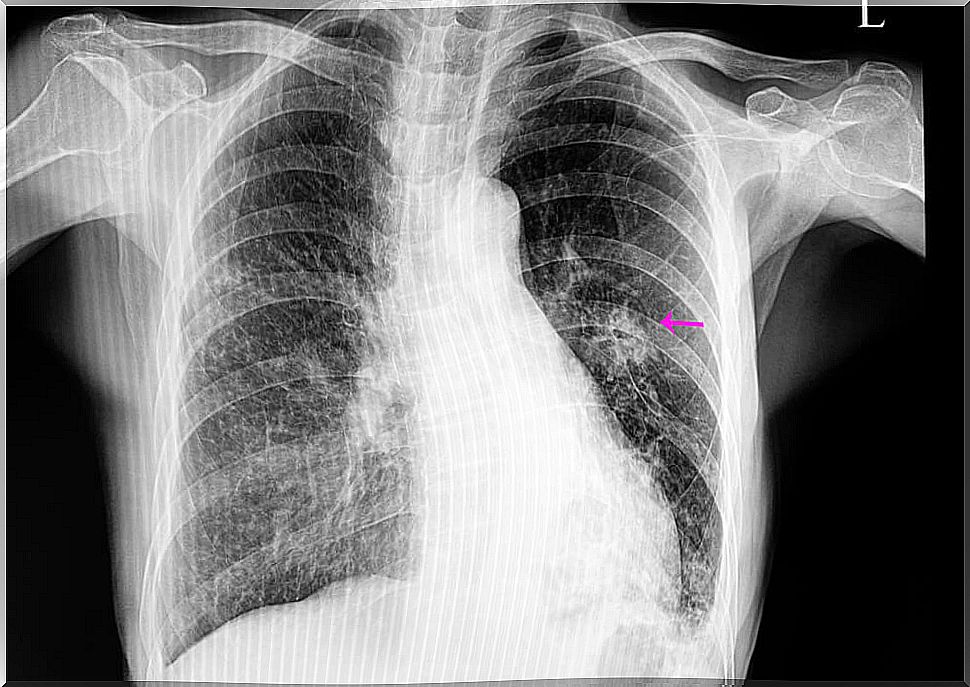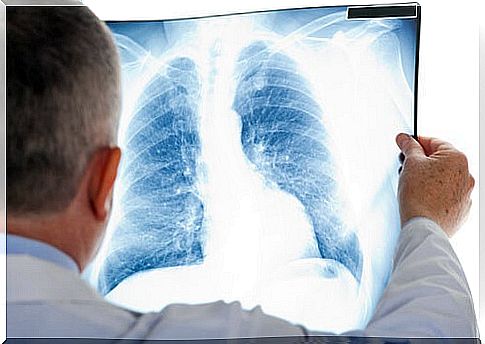Pulmonary Nodule, What Does It Mean?
The main cause of pulmonary nodule is infection. Next, we present more information about this pathology and we will tell you about its treatment.

When we hear of a pulmonary nodule, the first thought that comes to mind is cancer. However, although both pathologies are sometimes related, it can be a benign process.
A pulmonary nodule is a mass that appears in the lung that can measure between 5 and 30 millimeters. According to a publication of Integral Medicine , it is an increasingly frequent pathology, which is estimated to affect around 0.2% of the population; almost 60% of these nodules are benign.
The causes of this disease are very varied and range from an infection to a tumor process. Most nodules are found accidentally when performing a CT scan – computed tomography scan – or X-ray.
It is important to diagnose this situation early to avoid complications and rule out that it is something more serious. With that objective in mind, below we explain everything you need to know about the pulmonary nodule and the symptoms it produces.
What are the causes of a pulmonary nodule?
As we have already mentioned, a pulmonary nodule is a mass that appears in the lung that can have a wide variety of causes. Most often, they are secondary to an infection, either by bacteria, fungi or parasites, according to the research cited above.
Among the infectious causes, it is noted that pulmonary nodules are frequent in people affected by tuberculosis. Although its incidence has decreased, tuberculosis remains an infection with relative frequency.
Neoplastic cause
Currently, the first thing to be ruled out in the presence of a pulmonary nodule is that it is a carcinogenic process. This is so because lung cancer is one of the most common due, among other things, to smoking.
In these cases, the nodules usually appear irregular on x-ray, with poorly defined borders; hence the term “neoplastic.” They are also usually smaller than benign ones and, in addition, they are associated with certain risk factors, such as the following:
- Smoking regularly.
- Be over 35 years old.
- Having previously suffered from cancer.
- That the pulmonary nodule has grown rapidly in recent months.
It is important to know that not all neoplastic lung nodules are malignant. There are also benign tumors, although they are much less frequent: they occur in a quarter of cases, according to the Integral Medicine study .

Other causes of pulmonary nodule
There are other diseases that can result in this lung disorder. For example, there are certain autoimmune processes such as Wegener’s granulomatosis or rheumatoid nodule. Both are rare.
On the other hand, in some people the pulmonary nodule can appear due to trauma, a metabolic disease called amyloidosis or after the genesis of a bronchial cyst.
How is a pulmonary nodule diagnosed?
To diagnose the pulmonary nodule and know its cause, it is first essential to take a good medical history of that person. You have to know if you have suffered from tuberculosis or if you have been exposed to certain infections or infected people.
It is also important to know if you are a smoker or not. Numerous medical publications, such as an article from the National Cancer Institute, state that tobacco exponentially increases the risk of developing a cancerous lung nodule.
Once this is done, it is necessary to perform certain imaging tests to locate the nodule. In addition, the images allow us to observe certain characteristics such as shape and size, which are important to differentiate a benign one from a possibly malignant one.
The most widely used are chest radiography and computed tomography. To know exactly the cause of the pulmonary nodule, sometimes biopsies are performed that allow the tissue that forms it to be analyzed.

What is the treatment of choice?
Treatment will depend on what is causing the nodule. First, a Mayo Clinic article details that it may not require treatment when it occurs for an infectious process, although antibiotics or antifungals are likely to be prescribed to stop the infection.
When the cause is not clearly known, treatment is guided by cancer risk. For example, in young nonsmokers whose nodule does not appear malignant, it may only be necessary to have regular check-ups. This will check to see if the nodule changes or grows.
On the other hand, if there is a risk of cancer, the most important thing is to perform a biopsy. If it was indeed carcinogenic, surgery may be required to remove it. When surgery is not feasible, chemotherapy or radiation therapy is chosen.
Quitting smoking, key to preventing a pulmonary nodule
To conclude, it is essential to emphasize again the negative influence of tobacco. It is essential to be aware of the risk involved and to have frequent medical check-ups to be able to diagnose this type of pathology early.









